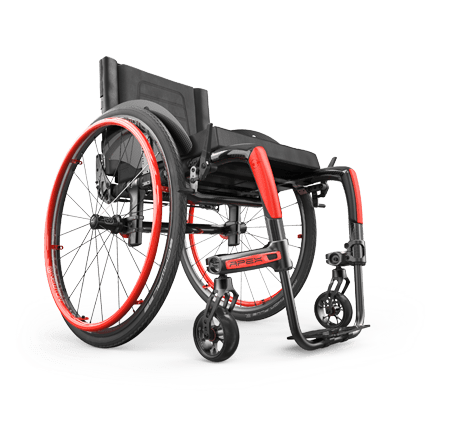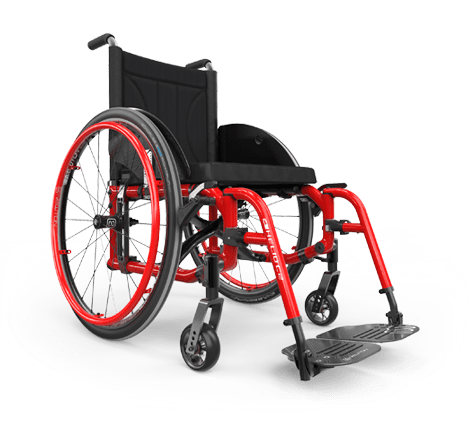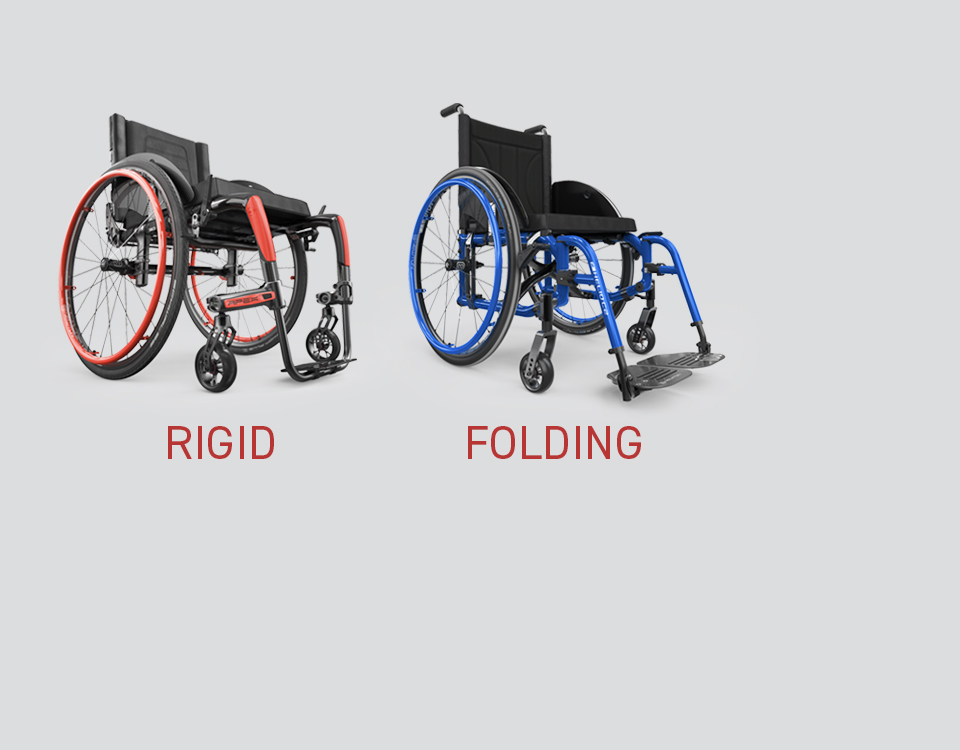Folding wheelchairs are the most common manual wheelchair in the world, but this does not mean that is it necessarily the best choice. A lot of the time within the funding system, folding wheelchairs are more easily accessible, and this can count for greater numbers. Rigid wheelchairs can sometimes have the preconception of being fixed or not adjustable, which can either appeal to users or can cause some users or therapists to shy away from such a concrete decision. However, as you look at the wide variety of rigid wheelchairs you find there are significantly more options for customization for the end user.
Many factors come into the decision on how to choose between these basic frame categories including client dynamics, set-up, ride characteristics and, of course, client preference. Here we will review these factors and look at this seemingly simple question, folding or rigid? From many different approaches.
WEIGHT
Weight is one fundamental element that comes into play when discussing differences between folding and rigid wheelchairs. Due to the lack of a frame folding mechanism, a rigid wheelchair will naturally be lighter by design. There can also be an added component of durability due to the lack of moving parts. Not having to build folding into the frame itself allows for a more unified structure enhancing robustness.
MATERIALS
Materials are another selection that can vary between folding and rigid wheelchairs. Due to the nature of funding and reimbursement within the manual wheelchair industry, we tend to see higher performance materials being used for rigid wheelchairs over folding wheelchairs. That is not to say there is no overlap, you can get both folding and rigid wheelchairs in carbon fiber and titanium, but in general higher-grade aluminums and even advanced technologies being used with these materials to influence weight and durability tend to appear in more rigid category devices.
FRAME STYLE
The structure of both a folding frame and rigid frame, even within their design categories, can have significant differences in engineering. Although folding frames at first glance seem almost identical, smaller design elements including side frame styles, cross brace styles, and hardware used to attach these parts to make a complete unit can vary significantly between manufacturers and wheelchair models, therefore affecting overall weight and performance.
Typical performance characteristics for a folding frame design are that they are inherently less efficient due to moving components as well as increased flexion and torsion within the frame. Variances in the way manufacturers choose to build their wheelchairs can amend some of these downfalls and identifying the variances between folding frames can assist in final device selection.
FOLDING STYLE
When looking at the basic frame differences between typical folding and rigid wheelchairs, we look to the base frame to tell us more. A typical folding wheelchair folds vertically using an “X” style crossbrace. A rigid wheelchair, although the frame does not fold vertically, can still have folding components such as horizontally fold down back canes. To further confound things, more recently to the market some folding wheelchairs do have folding back canes also. Due to this evolution of ways wheelchairs can fold, when speaking about wheelchair style we should be sure to identify where the chair is folding or non-folding for clarification purposes. This can assist with some of the misconceptions that rigid wheelchairs are fully fixed in design.
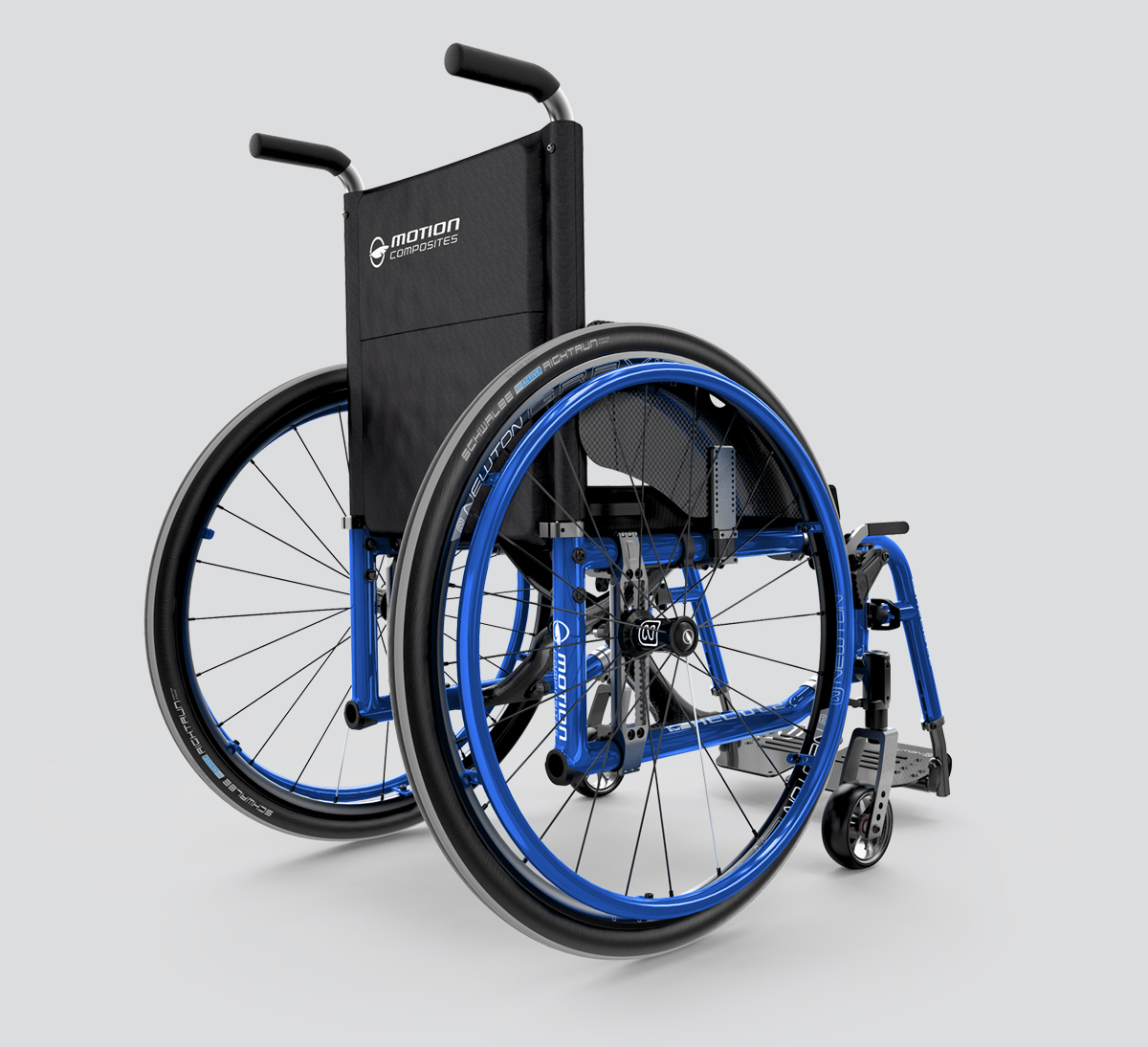
Example of a Folding Frame Wheelchair with an "X" Brace: Helio C2
RIGID STYLE
Rigid wheelchair design, compared to folding wheelchairs, has more variety in style and engineering. This is one of the reasons a rigid wheelchair can allow more customization for the end user. Within rigid wheelchair design there are box-frame, dual-tube, and mono-tube/cantilever design types. Each of these comes with different characteristics which can speak to end users differently.
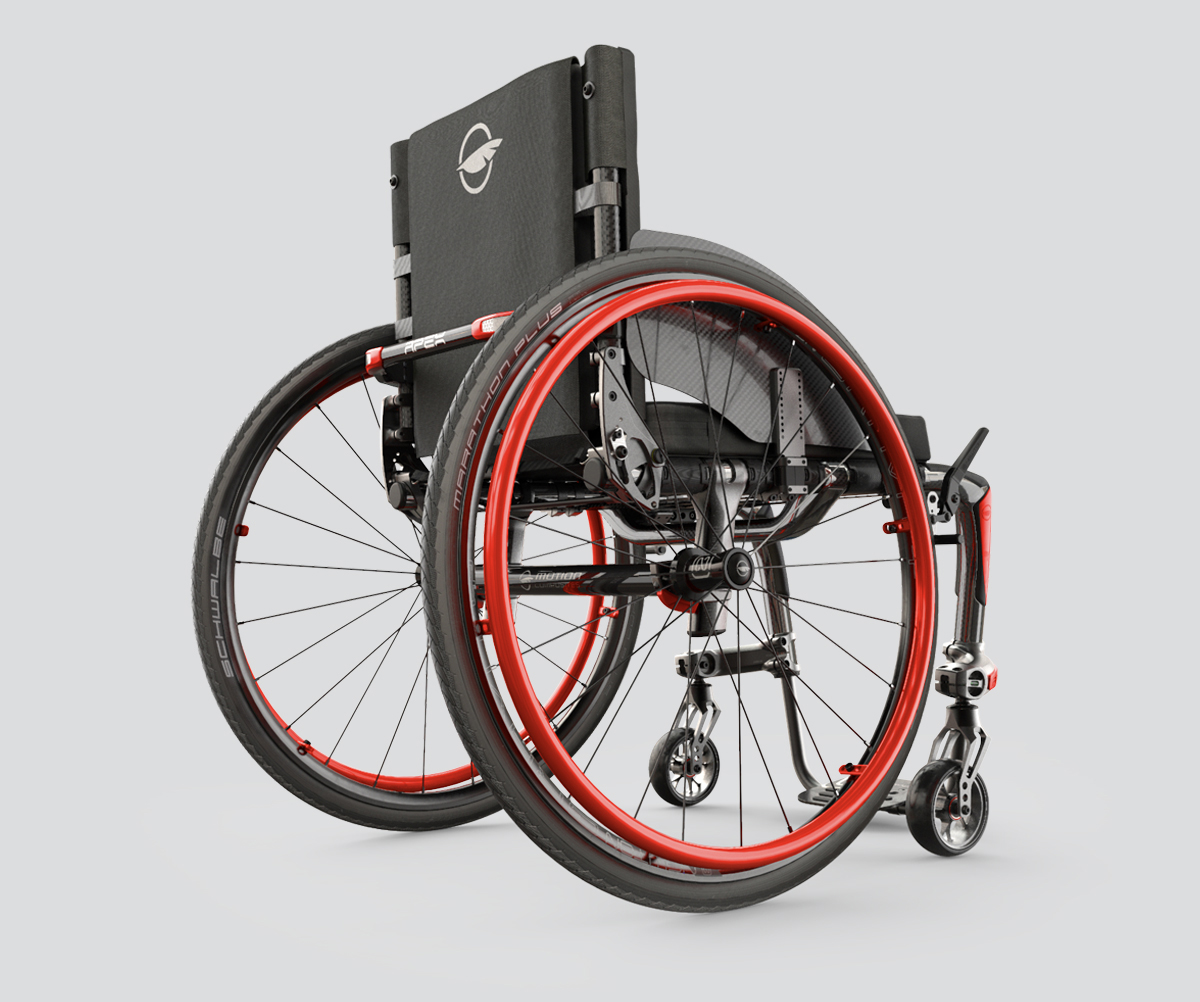
Example of a Rigid Frame Wheelchair: Apex C
Box-Frame
The Box-Frame is the most rigid design of the rigid wheelchairs due to its shape. It mimics the design of a folding frame but without the folding mechanism. Due to this stiffness, it will be responsive to input, however, consequently it may not disperse “road noise” well. This box frame tends to be where the rigid wheelchair category gets a reputation for being difficult to transport. Even with folding back canes and quick release axles, the box-frame takes up significant space. By design, this will be the heaviest rigid frame.
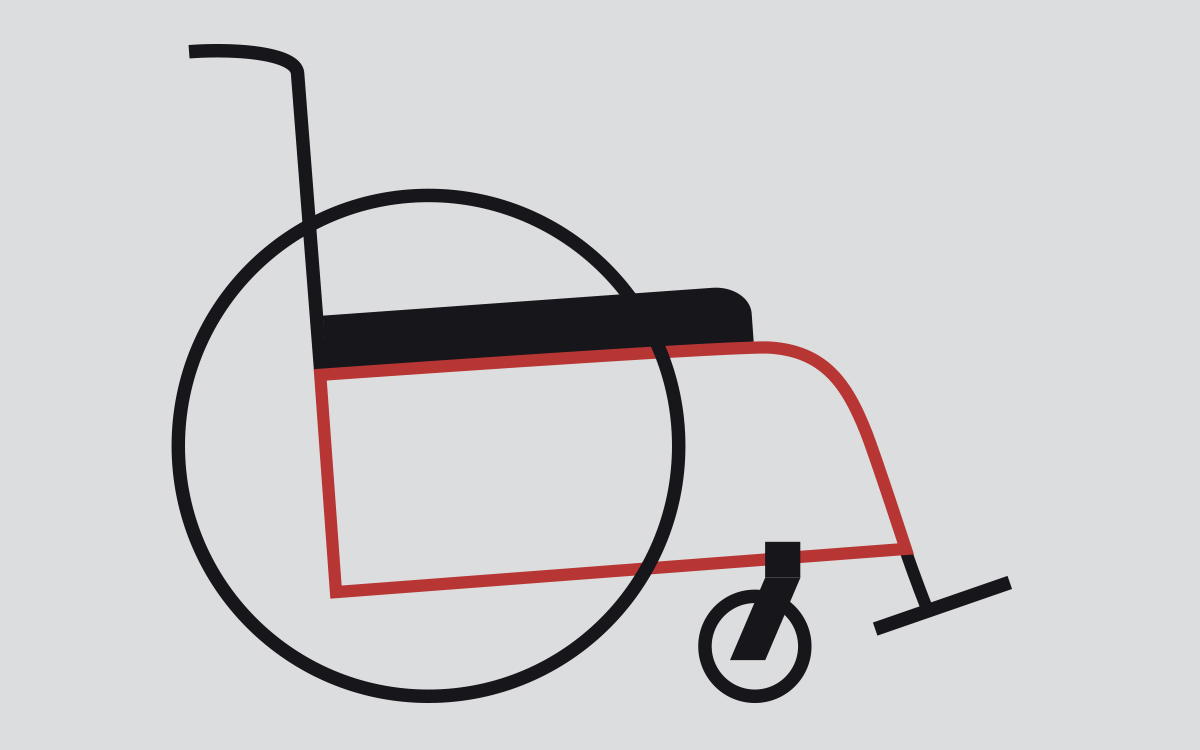
Dual-Tube
The Dual-Tube displays a balance between rigidity and flexibility. It allows good responsiveness to user input while allowing for a decrease of “road noise” due to some flexibility. This more modern type of design is aesthetically appealing and allows increased transportability due to the smaller frame shape.
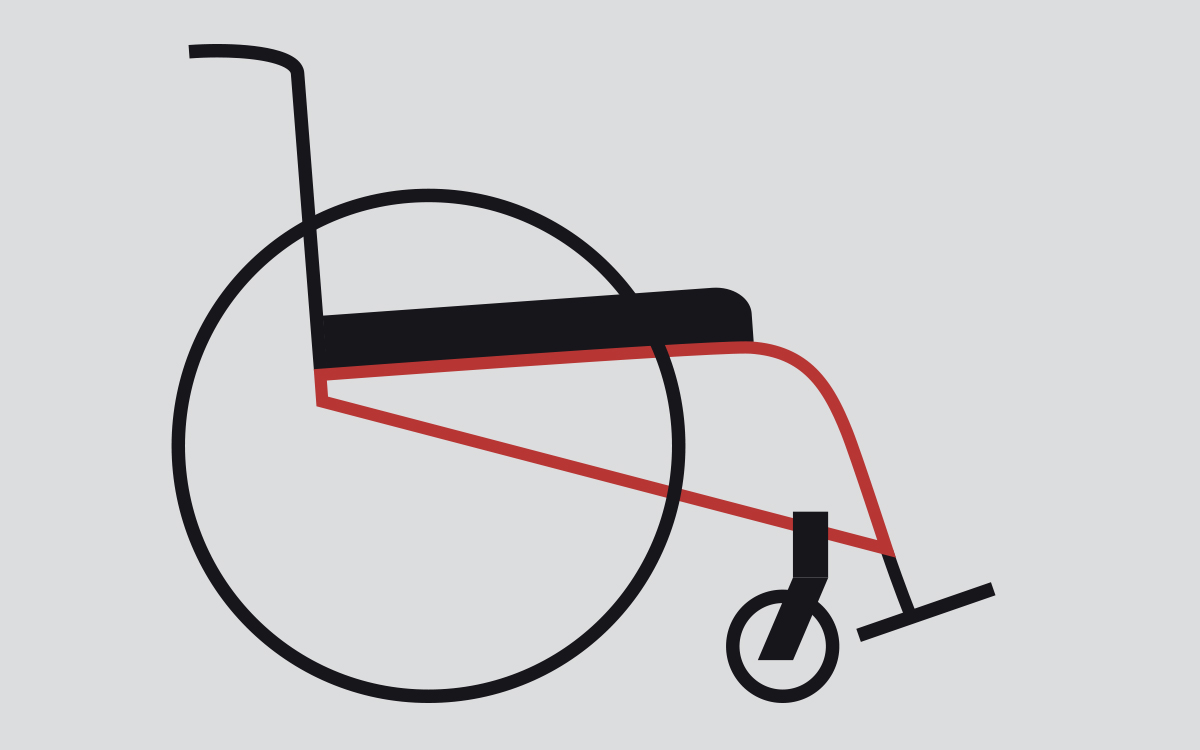
Cantilever/Mono-Tube
The Cantilever/Mono-Tube frame displays a very minimalist design and can be very aesthetically appealing. It has a large focus on flexibility and therefore increased damping properties. In some designs the mono-tube can exhibit a compromise in lateral stability but with the use of materials and the addition of an extra rear ridigidzer bar some models are overcoming this to maximize efficiency. By design, this will be the most compact for transport and the lightest rigid frame.
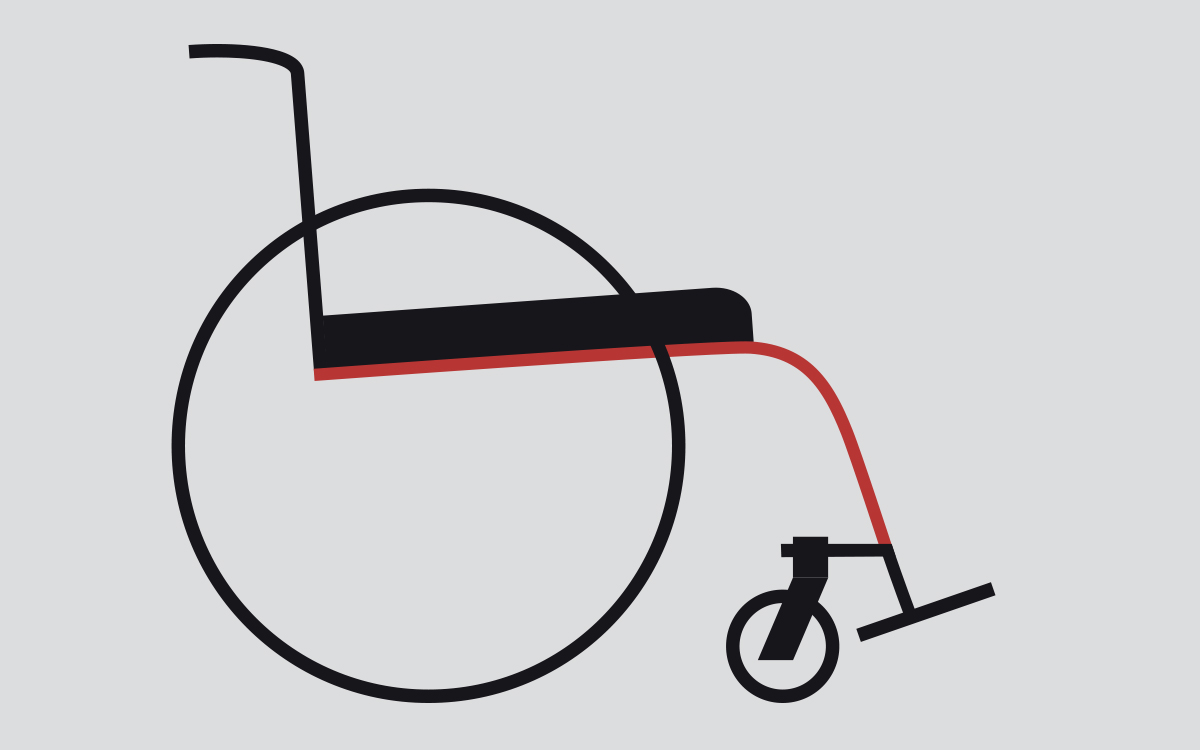
The construction of the different frame types bring different elements to each user and should therefore be considered on an individual basis.
SET-UP DETAILS
Although the areas in which you can customize your wheelchair are similar between folding and rigid wheelchairs, the degree to which you can do so vary. The ability to set up the wheelchair more precisely for the end user is another area where rigid wheelchairs can be more customized. Typically speaking, the increments where front end angle/hanger angle, back angle, camber and even frame length can be selected/adjusted are more in range and precision in the rigid wheelchair category.
The following table is an example of how the details can vary between folding and rigid wheelchairs:
| |
Rigid |
Folding |
| Front end angle |
70, 75, 80, 85, 90 |
60, 70, 80, 90 |
| Back angle |
3-degree increments |
5-degree increments |
| COG |
Infinite increments of up to 6″ |
¼” increments up to 4″ |
| Camber |
0,2,4,6, 8 degrees |
0,3, 6 degrees |
| Custom Frame length |
Std, +/- 1 or 2″ |
Not available |
Another specification when it comes to rigid wheelchairs is that frame angles are measured to the ground. This point of reference for the front frame angle or back angle means that the set-up will not be influenced by other factors of the wheelchair, like seat slope.
Arguably the most important set up essential for a manual wheelchair is horizontal wheel position (center of gravity), this feature is typically more precise in a rigid wheelchair. The increments of adjustability tend to range from ½” to ¼” to infinite options with a wide overall range from 0″-6″. Folding wheelchairs can range significantly from no adjustability, set as far rearward as possible, to an inch or more between positions. In higher-end folding wheelchairs, we begin to see ½” to ¼” increments. The overall range of adjustability is also less, typically only seeing a maximum upwards of 4″.
CLIENT FACTORS
Based on the previously mentioned features, it is clear rigid wheelchairs come with some advantages for set-up and ride characteristics. However, one of the simplest questions when determining selection will be: does the wheelchair NEED to fold? As the name would make you believe, most people think a folding wheelchair will be smaller when transporting/storing; typically, if the rear wheels are being taken off most will find a rigid wheelchair smaller due to the standard folding back rest. If the rear wheels are not being removed from the device to be placed in the vehicle, a folding wheelchair will take up less floor space, but it can be more difficult to lift due to the added weight of the frame itself, this opinion will be client/caregiver and vehicle dependent and should be evaluated on an individual basis. For more information on putting a manual wheelchair in a car, proceed to this blog: Transporting a Manual Wheelchair in a Vehicle
Another very practical baseline question dependent on the end user themselves would be can you transfer with a rigid front end? A rigid front is one element which allows more rigidity to the wheelchair which in turn aids in responsiveness and durability, but the user must be able to transfer accordingly. Options such as a flip-up footplate can assist with transfers, but this will need to be determined accordingly.
When it comes to selecting a manual wheelchair, which will ideally assist in not only mobility but also community integration and even socio-economic status, the first decision may in fact be: folding or rigid? However, as highlighted above, it is not always as simple as selecting between a folding mechanism, it is about each of the elements which come with them, how they affect each other and what will best set-up the end user for success. Although we typically work in a system where rigid wheelchairs come at a higher price point and therefore require additional rationale for funding, if you understand the elements that come with a rigid wheelchair and how this can influence the end user, you will find this option may not be as far out of reach as is sometimes perceived. If all options have been considered based on an individual end user just like in all other aspects of seating and mobility, we can assure you we are working towards the best outcomes.




